This is an infrared image of Jupiter showing regions which are hot.
Click on image for full size
NASA
The Source of Heat from Within Neptune
The picture shows places on Jupiter which are hot. Jupiter is a very warm body in space, as shown in the picture, and this warmth is associated with the energy of Jupiter.
Neptune has also been found to be a warm body in space. The energy that Neptune makes has been found to be very high.
There are several ways in which astronomical objects make energy from inside. The first is by thermonuclear fusion, the way a star makes energy. Another method is by radioactive material within the ground, the way a planet makes energy.
For the giant planets, the method which seems to be at work is the mere fact that energy is given off from when a planet is in the process of shrinking together, or collapsing on itself.
The fact that Neptune is still collapsing together indicates that the process of planet formation is still going on. This process is providing the heat from within which causes the unusual motions in the atmosphere.
You might also be interested in:

Some materials give off radiation. We call those materials "radioactive". Radioactive materials are often dangerous to people and other living things. There are many different kinds of radioactive materials.
...more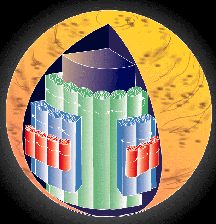
Motions in the interior of a gas-giant planet such as Neptune may be very different from the motions within the Earth. A second idea for the motions in the interior of a gas-giant planet is shown in this
...more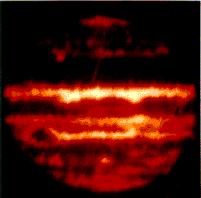
The picture shows places on Jupiter which are hot. Jupiter is a very warm body in space, as shown in the picture, and this warmth is associated with the energy of Jupiter. Neptune has also been found to
...more
Motions in the interior of a planet help carry heat from the inside to the outside. The drawing to the left illustrates a kind of global motion that is typical of motions in the atmosphere as well as interior
...more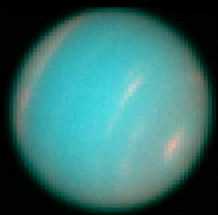
This image shows the new Great Dark Spot of Neptune, which was discovered using the Hubble Space Telescope. The image shown here, shows a "hole" in the clouds of Neptune in pink, in the northern hemisphere,
...more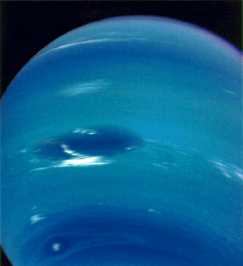
The giant planets have definitely changed since their formation. But how much remains to be seen. Most of the original air of the giant planets remains in place. (The earth-like planets lost most of their
...more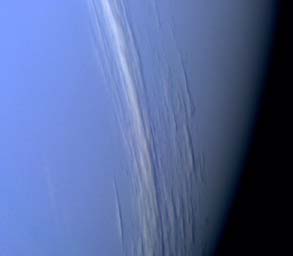
This image shows some clouds known as "cirrus" clouds, extending for many kilometers across the face of Neptune. These clouds are very high up, for they can be seen to cast shadows on the lower clouds,
...more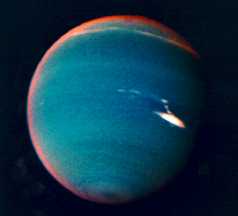
This image of Neptune uses false colors to show where the smog is. The smog of Neptune can be seen in red along the edge of the image. These hazes of smog are found at very high altitudes, over the clouds
...more














